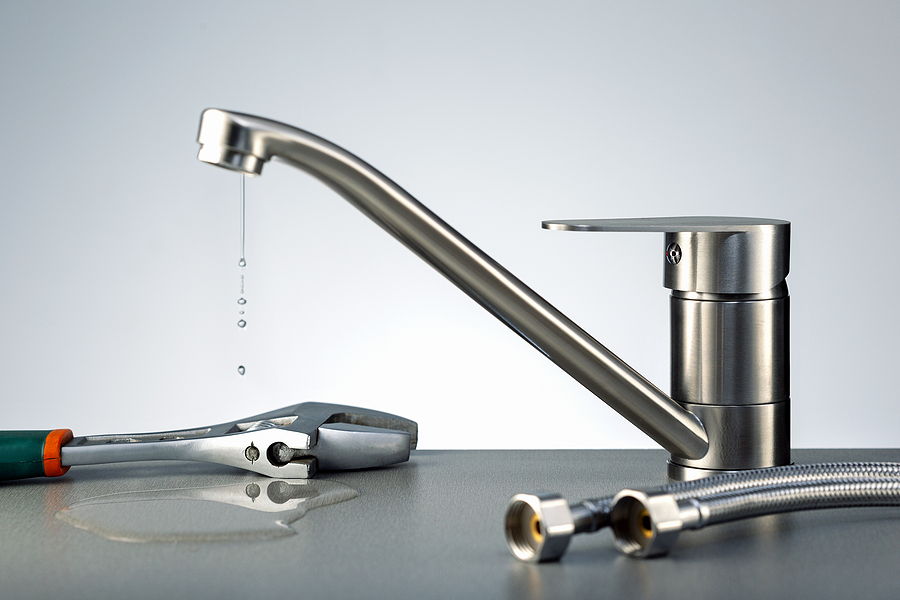Common Plumbing Problems and How to Deal with Them

The following article is a guest post by Rachel Watson of Precision Air & Plumbing.
Plumbing-related issues are some of the most dreaded problems of home and building owners. Though most of the time they are just minor problems with inexpensive solutions, they can turn into a disaster if you don’t address them soon enough.
Moreover, the state of your plumbing system can have a huge impact on the value of your property and the cost of your home or building insurance.
4 of the Most Common Plumbing Issues (And How You Can Fix Them)
We’ve compiled some of the most common plumbing issues in New York, New Jersey and Connecticut and how you can address them on your own or with the help of professional plumbing repair.
Clogged Drains and Toilets
Clogged drains and toilets are some of the more obvious plumbing issues in homes and buildings. If the water in your sink or shower drains a lot slower than usual, your drain is most likely clogged or partially blocked. It’s a little different for toilets; when you flush a clogged toilet, the water backs up and, in some cases, overflows.
Drains and toilets get clogged when something is jammed inside, allowing little or no water to escape. Food, grease and hair are the usual suspects for clogged/blocked drains. Clogged toilets, on the other hand, are often a result of flushing non-dissolvable materials, such as tampons and paper towels.
Plunging is one of the easiest methods for releasing minor build-ups in your drains and toilet. You may also try using drain snakes and chemical cleaners for more severe clogging. If neither does the job, it’s time to call in a reliable plumbing service near you.
Dripping Faucets
Dripping faucets are a prevalent plumbing problem, but one that is often ignored, especially in commercial spaces where they typically don’t cause much disruption.
The most common cause of a dripping faucet is a damaged washer. A washer that’s either worn out, torn, dislodged, or too stiff will not seal completely when the tap is turned off, allowing the water to leak.
Anyone with basic tools and DIY skills can fix a dripping faucet, but if you’re not sure how to do it properly, contact a professional plumber to do it for you. A faulty washer replacement may worsen the problem and result in even more water loss.
Pipe Leaks
Pipes usually spring a leak when they can’t handle an increase in water pressure or their joints have deteriorated over time. Most leaks start as a slow drip, but if allowed to worsen, they can develop into a major crack and potentially flood your kitchen or bathroom.
Minor leaks are relatively easy to fix. You can seal them with plumber’s putty or by wrapping the area with fiberglass repair tape. However, if fixing leaks involves replacing pipe segments, you’ll be much better off hiring the services of a professional plumber.
Low Water Pressure
Low water pressure is a frustrating issue that households and commercial establishments frequently confront. It’s the culprit behind many uncomfortable showers and wasted time while doing the dishes.
If you’re experiencing low water pressure in your home or building, address it right away. This problem will not only affect your daily schedule and productivity, but it could also raise certain health and safety concerns.
Low water pressure can be caused by a range of factors, from simple sediment build-up to something more severe, like hidden water leaks or pipe corrosion. That being said, it’s critical to check the source of the problem first before trying to fix it.
Takeaway
Plumbing issues won’t repair themselves, so if you notice one in your home or building, you’ll have to take action quickly to avoid wasting water and money (on water bills). And while some problems can be fixed with some DIY spirit, others will require specialized tools and experience. In most cases, you’d be better off entrusting the job to expert hands.
Rachel Watson is the Senior Content Editor of Precision Air & Plumbing, a full-service HVAC, plumbing, and home performance contractor in Chandler, Ariz. She writes about how to make home living more energy-efficient and environmentally friendly.



Comments (0)